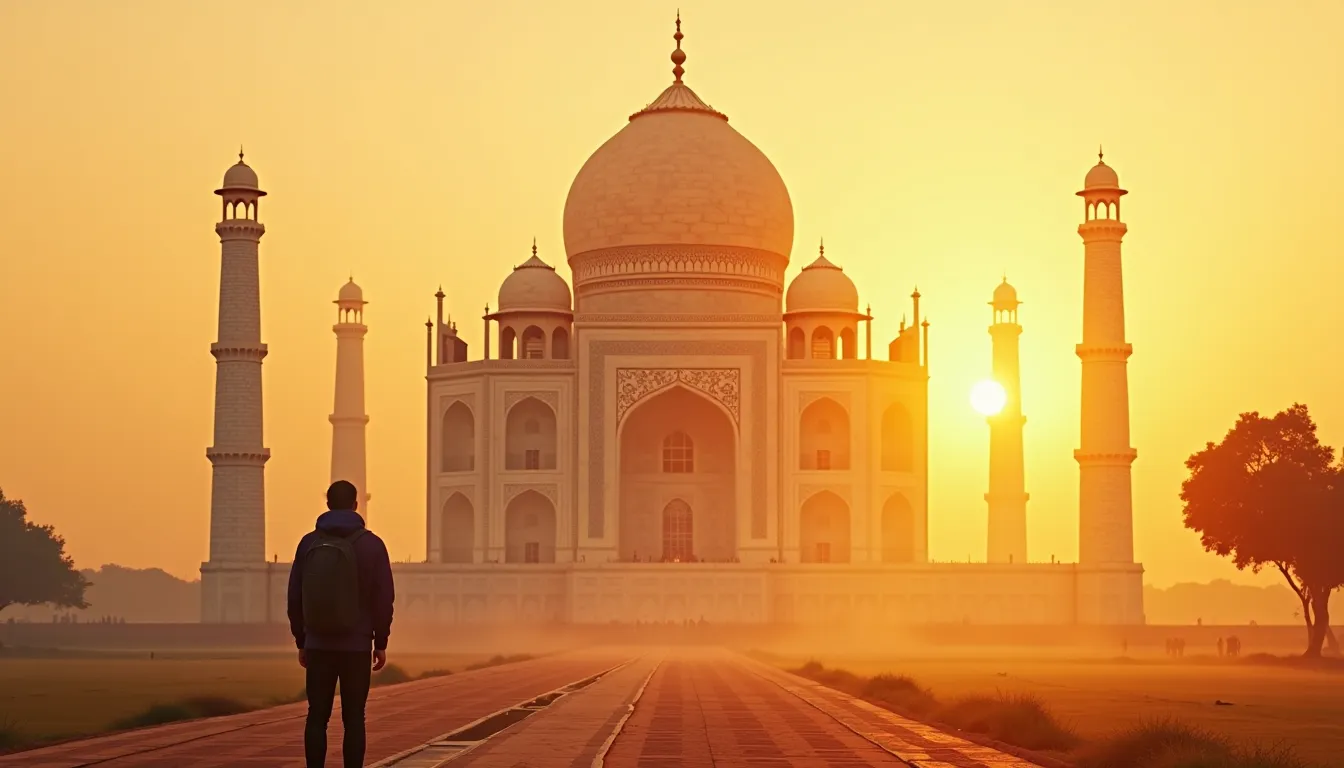India’s rich tapestry of history unfolds through its magnificent monuments, each telling a tale of bygone eras. From the iconic Taj Mahal to lesser-known marvels, the country’s historic sites offer a mesmerizing journey through time. Let’s embark on an adventure to explore the top historic gems that make India a paradise for history buffs.
The Taj Mahal: A Timeless Testament to Love
No discussion of India’s historic sites is complete without mentioning the Taj Mahal. This ivory-white marble mausoleum in Agra is not just an architectural wonder but a symbol of eternal love. Built by Emperor Shah Jahan for his beloved wife Mumtaz Mahal, the Taj is a masterpiece of Mughal architecture.
“The Taj Mahal is not just a monument, it’s a poem written in marble,” says local historian Rajesh Kumar.
The best time to visit is during sunrise when the first rays of light dance on the marble surface, creating a ethereal glow that captivates visitors.
Hampi: Where Ruins Whisper Ancient Tales
Tucked away in Karnataka, Hampi transports visitors to the 14th-century Vijayanagara Empire. This UNESCO World Heritage site is an open-air museum of ancient ruins, temples, and boulders. The Vittala Temple, with its iconic stone chariot, stands as a testament to the architectural genius of its time.
For a unique experience, rent a bicycle and explore the vast landscape at your own pace. The sunset view from Matanga Hill is particularly breathtaking, offering a panoramic view of the ancient city.
The Enigmatic Ajanta and Ellora Caves
Hidden in the heart of Maharashtra, the Ajanta and Ellora Caves are a marvel of ancient Indian rock-cut architecture. These caves, dating back to the 2nd century BCE, showcase an incredible blend of Buddhist, Hindu, and Jain art.
“The Ajanta and Ellora Caves are like a time capsule, preserving the artistic and spiritual essence of ancient India,” remarks Dr. Sunita Rao, an archaeologist.
The intricate paintings in Ajanta and the monolithic Kailasa Temple in Ellora leave visitors in awe of the skill and devotion of ancient artisans.
Fatehpur Sikri: The City of Victory
This abandoned city near Agra tells the tale of Emperor Akbar’s grand vision. Built in the 16th century and abandoned after just 14 years, Fatehpur Sikri is a perfectly preserved example of Mughal architecture. The Buland Darwaza, standing at 54 meters, is one of the largest gateways in the world.
Visit early in the morning to avoid crowds and soak in the mystical atmosphere of this ghost city. The blend of Persian, Islamic, and Hindu architectural styles makes it a unique site for history enthusiasts.
Mysore Palace: A Royal Spectacle
The opulent Mysore Palace is a dazzling reminder of India’s royal heritage. This Indo-Saracenic marvel, illuminated by thousands of bulbs every Sunday evening, is a sight to behold. The intricate mirror work, stained glass windows, and carved wooden doors showcase the pinnacle of craftsmanship.
Time your visit during the Dasara festival in October to witness the palace in its full glory, adorned with lights and bustling with cultural performances.
Qutub Minar: A Towering Achievement
Standing tall in Delhi, the Qutub Minar is an architectural marvel that has withstood the test of time. This 73-meter high tower, built in the early 13th century, is a perfect blend of Afghan and Indian architectural styles.
The surrounding Qutub complex, with its intricately carved pillars and the famous Iron Pillar, offers a fascinating glimpse into Delhi’s rich history.
Preserving the Past for Future Generations
As we explore these historic sites, it’s crucial to remember our role in preserving them. Sustainable tourism practices, such as those implemented at the ancient sites in Egypt, can serve as a model for protecting India’s heritage.
For those seeking unique experiences, consider exploring hidden gems like the 500-year-old village of Teror in Gran Canaria, which offers a different perspective on historical preservation.
Beyond the Monuments: Immersive Cultural Experiences
To truly appreciate India’s historic sites, engage with local communities and traditions. Participate in cultural workshops, try regional cuisines, and interact with local artisans. This approach, similar to experiencing China’s vibrant New Year traditions, offers a deeper understanding of the living history surrounding these monuments.
Planning Your Historic Journey
When planning your trip to India’s historic sites, consider the following tips:
- Visit during the cooler months (October to March) for comfortable exploration.
- Hire knowledgeable local guides for in-depth insights.
- Respect local customs and dress codes, especially at religious sites.
- Support local communities by purchasing authentic handicrafts and eating at local eateries.
India’s historic sites are not just remnants of the past; they are living testaments to the country’s rich cultural tapestry. Each stone, each carving tells a story waiting to be discovered. As you walk through these ancient corridors and grand structures, you’re not just observing history – you’re becoming a part of it. So pack your bags, bring your curiosity, and prepare for a journey that will not only educate but also inspire and transform you.
